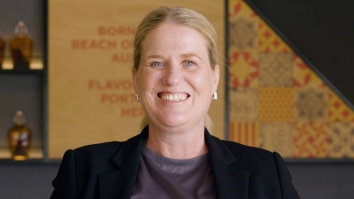Shopping Centres – an Inconvenient Truth
Written by Peter Buckingham CFE CMC.
How do shopping centre owners press for increases in rents of 4% or 5% pa. when the increase in the $ / sq m. sold through the Centres has been increasing in the range of 0.5% – 1.65% pa. over the last few years?
Using data provided by The Property Council, and originally sourced from the Shopping Centre owners, the logic for these increases is not substantiated.
By doing a longitudinal study of a large group of shopping centres, and using The Property Council data, we can see that the $ / sq m (overall for the SC’s) has risen far less than CPI, and far, far less than the annual rental increases that become written into the Leases.
Recently Luke Baylis of Sumo Salad took an unusual negotiating position with the major shopping centre owners to place 2 of his property leasing companies into Administration, to change his negotiating position and highlight some facts about shopping centres.
Luke’s position was to show how rentals kept rising at well above CPI rates and yet the shopping centres are not increasing sales and turnover accordingly, and in many cases he was talking of added competition in his direct field coming in, thereby reducing the potential sales.
As well as looking at the Shopping Centre Classifications, as defined by the industry, we have also looked at all the Super Regional Shopping Centres across Australia to see how they perform individually based on the 2017 Property Council Data. This shows they range from Chadstone at $11,081 / sq m through to Westfield Garden City at $3,907 / sq m.
This white paper is to understand the data that can be used to evaluate your position, or your Retail Site Analytics before you go and meet with the Shopping Centre owners and their representatives.
The Property Council data
To talk in quantitative terms, the main source of data used by the retail industry is that compiled, and sold by The Property Council of Australia, called Shopping Centres Online. These use to come as state based books, but now you can purchase a national electronic version, which we participate in.
I cannot validate the accuracy of the Property Council data as it is their responsibility to collect this data normally from the shopping centre owners; however I do feel we should be able to trust this data, and therefore look at the changes over time, and what does that tell us?
The Property Council do take their responsibility seriously in this area, and have advised they exclude shopping centres if they do not want to participate, or there are major works underway, possibly making the data incorrect.
We have the following data which we have used in this analysis:
• Shopping Centre directories online (2017)
• Shopping Centre directories online (2012)
• Shopping Centre Directories (hard copy books) dated 2011 Vic / Tas, NSW / ACT, Queensland.
• Specific older pages from Shopping Centre directory book 2006 for The Glen and Forest Hill Chase.
Before reading the next section, please understand the following data descriptions:
• GLAR – Gross Lettable Area Retail – how many square meters of space is rented for retail.
• MAT – Moving Annual Turnover (for a 12 month period) – measured in $
• Pedestrian Estimate – total pedestrians as counted by door counters and the like.
• MAT / GLAR – gives a $ / sq m comparison.
If the Shopping Centre owners feel they are being misrepresented using a single figure for MAT for their Shopping Centre, maybe they should submit the MAT broken down to specific segments for the Property Council to include in their data. This could be breaking it down into Supermarkets, Specialty Sales and other segments to assist in understanding the changing sales dynamics of the Centres.
Classifications
We have looked at the shopping centres in Australia, and made some calculations based on the Property Council Data we have for Shopping Centres (2017) and previously from Shopping Centres (2012). There are some issues that some shopping centres do not provide data, and many smaller centres seem to have data that is missing or unreal.
In the following work, we needed to create a reasonable sample size to represent each of the Classifications:
• Super Regional
• Major Regional
• Regional
• Sub Regional
• Neighbourhood
• City Centre
Due to some missing data, and some unexplainable numbers provided, we sorted out our representative sample as follows:
1. Used only Shopping Centres where we have the GLAR, MAT and Pedestrian counts (est) from both 2012 and 2017datasets. This removed a large number of smaller Shopping Centres, as it appears the owners do not all submit all the information, or the Property Council chose to not include some of the data.
2. To try and minimise the effects of major changes at an individual shopping centre due to expansion, we computed the ratio GLAR 2017 / GLAR 2012. If this showed greater than 20% variation (in either direction), we eliminated the Shopping Centre as it indicated to us either.
a. Major works had or were taking place in this period. This would lead to a ramp up period, and possible data issues if the Centre had been partially closed during the major works.
b. GLAR Measurements may be incorrect.
The full list of Shopping Centres used is in Appendix 1.
The results gave us the following sample sizes:
Whilst there are some minor issues to do with how many full line department stores, discount department stores and supermarkets are present, the basic breakdown is done by the GLAR (sq m). I have included these in the following table of our sample, and also computed some averages to represent each classification.
The point is that the Super Regional shopping centres sell slightly more $ / sqm than the smaller shopping centres, so command more rent. Neighbourhood centres look good in this format, but that is because the largest tenant by far is normally the major supermarket, and that does sell well in terms of $ / sq m compared to many of the specialty stores surrounding it.
Longitudinal study over a 5 year period
As we have the Property Council data from 2012 and 2017, we can compare the changes in MAT / GLAR for each Classification (over the 5 year period) on our sample (described above):
2012 data
2017 Data
MAT/ GLAR Ratio Changes 2012 to 2017
The Property Council release data on a rotational basis for each state, and each shopping centre has a date the data was verified. The average period between the 2012 and 2017 data was 57.2 months (not quite 5 years). This could result in around a minor adjustment if deemed necessary.
Summary
Even using a statistically strong sample for each group of shopping centres, all suburban classifications show very consistent growth in terms of $ / sq m of between 0.95% – 1.64% pa. The City Centre shopping centres are lower again at 0.51% pa.
This makes it very hard to achieve rental increases of between 4% and 5% pa!
Breakdown by Super Regional Shopping Centres
When you look at the Super Regional shopping centres across Australia for your Retail Location Planning, you see the following:






























